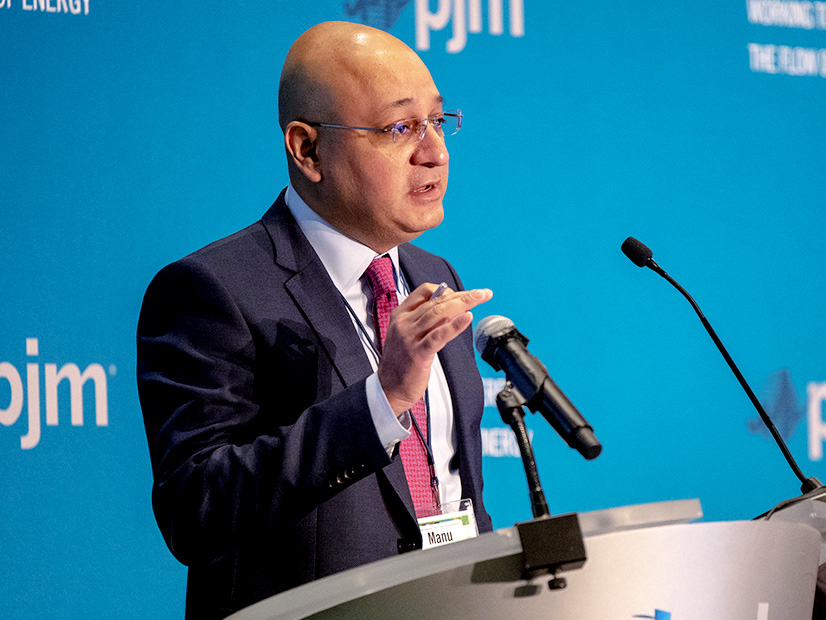The PJM Board of Managers has released an outline of several changes to the RTO’s capacity market to be included in a FERC filing slated to be made next month.
In a Wednesday letter, the board stated it built the filing’s structure off the annual capacity market design PJM formed during the critical issue fast path (CIFP) process. The filing would retain the core design of the Reliability Pricing Model (RPM) but rework the capacity performance (CP) construct, how resource adequacy risk is modeled and resource accreditation. The filing is expected to include parallel changes to the risk modeling and accreditation for fixed resource requirement (FRR) entities with a four-year transition period. (See PJM Members Lobby Board Ahead of Expected CIFP Filing.)
The board directed PJM to submit the filing to FERC no later than Oct. 13, with the aim of having the changes effective for the 2025/26 Base Residual Auction (BRA). It notes that components could be grouped together or filed individually to “mitigate the risk of a single component of the filing causing the delay or rejection of the entire suite of enhancements.”
The filing completes the CIFP process the board opened in February but acknowledges stakeholders and PJM raised issues that remain unaddressed under the expected filing, such as a seasonal or more granular capacity market design and shortening the period between the auction and corresponding delivery year. The board’s letter states it expects to receive feedback on the filing and next steps during the next Liaison Committee meeting, scheduled for Oct. 2, and through discussions with the Organization of PJM States Inc. (OPSI). (See PJM Stakeholders Vote Against All CIFP Proposals.)
In reworking the CP design, the board stated that it sought to strike a balance between the risks generators see in taking on a capacity commitment and incentives for them to maintain the capability to perform during an emergency.
The filing would leave the penalty rate unchanged but would revise the annual stop-loss limit to be based on the BRA clearing price; currently, both are derived from the net cost of new entry (CONE). Proponents of basing penalties on the value of capacity argued that it would align the risks generators face with the revenues they earn as a market seller, while opponents argued it would reduce the incentive to perform. A proposal to base both values on the BRA clearing price was endorsed by the Members Committee in May but was not approved by the board. (See PJM Board Rejects Lowering Capacity Performance Penalties.)
The filing also directs PJM to revise its calculation of the market seller offer cap (MSOC) to allow generators to include more cost of risk in their offers even when their net avoidable cost rate (ACR) is zero or negative.
“The ability to express risk in offers is integral to ensuring the optimal set of resources are selected to provide capacity and on its own is not an exertion of market power when those quantified risks are rooted in rigorous, reasonable analysis, as is required by the current resource-specific process,” the board said.
The eligibility for receiving CP bonus payments — which are based on the amount of penalties collected and are distributed to generators that overperformed during an emergency — would be tightened under the board’s filing to go only to committed capacity resources, rather than all generators.
The board rejected proposals to excuse long-lead resources from CP penalties, which argued they are not capable of modifying their generators to be more flexible, saying the current rules incentivize them to be ready for emergencies.
“The board does not believe that self-scheduling of such resources in the anticipation of being required to operate presents a reliability concern for PJM, and to the extent a self-schedule request is actively denied by PJM, it represents a dispatch instruction by PJM and therefore an excusal,” the letter said.
The risk modeling changes would increase the amount of weather history data PJM uses to go back 30 years and using hourly granularity and modeling of correlated outages when evaluating resource adequacy. The board did not, however, adopt PJM’s proposal to zero out the capacity benefit of ties, arguing that doing so requires further consideration. It directed PJM to continue engaging in it with the aim of arriving at a new process of considering the value of imported power during emergencies. The new methodology should be targeted for implementation for the calculation of the 2025/26 installed reserve margin, the board said.
“While the board does not support the 0 MW proposal at this time, the board is concerned that the current process to produce CBOT may no longer produce accurate estimates, given the evolving view of resource adequacy risk and resource adequacy dispositions of neighboring regions,” the letter said.
The board also directs changes to modify the winter deliverability assumptions in resource adequacy risk modeling and accreditation for solar resources to consider system conditions and resource output beyond the hours now studied.
The filing adopts PJM’s CIFP proposal to shift to using a marginal effective load carrying capacity for all resource types, which the board said will improve alignment between market structures such as accreditation, compensation and incentives, with system risk.


